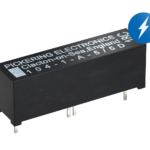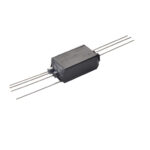 Like their signal relay counterparts, power relays are devices that use a low-power signal to control a high-power circuit. While all relays control power, not all relays are correctly termed “power relays,” which are specifically designed to handle high-level current switching from several amps to much larger amounts. A power relay’s built-in capacity to control higher currents due to its bigger size and more robust coils makes it a good choice for switching currents from 10 amps and beyond. Application examples range from elevators, automotive systems, and valve actuators to devices with high initial current surges, such as solenoids, motors, and power supplies.
Like their signal relay counterparts, power relays are devices that use a low-power signal to control a high-power circuit. While all relays control power, not all relays are correctly termed “power relays,” which are specifically designed to handle high-level current switching from several amps to much larger amounts. A power relay’s built-in capacity to control higher currents due to its bigger size and more robust coils makes it a good choice for switching currents from 10 amps and beyond. Application examples range from elevators, automotive systems, and valve actuators to devices with high initial current surges, such as solenoids, motors, and power supplies.
The CUI Insights™ blog post, “An Introduction to Power Relays” explains the basic operation and specifications of power relays in greater detail. It also discusses the differences between power relays, signal relays, and solid-state relays, while covering power relay contact materials, configurations, and more.







Leave a Reply